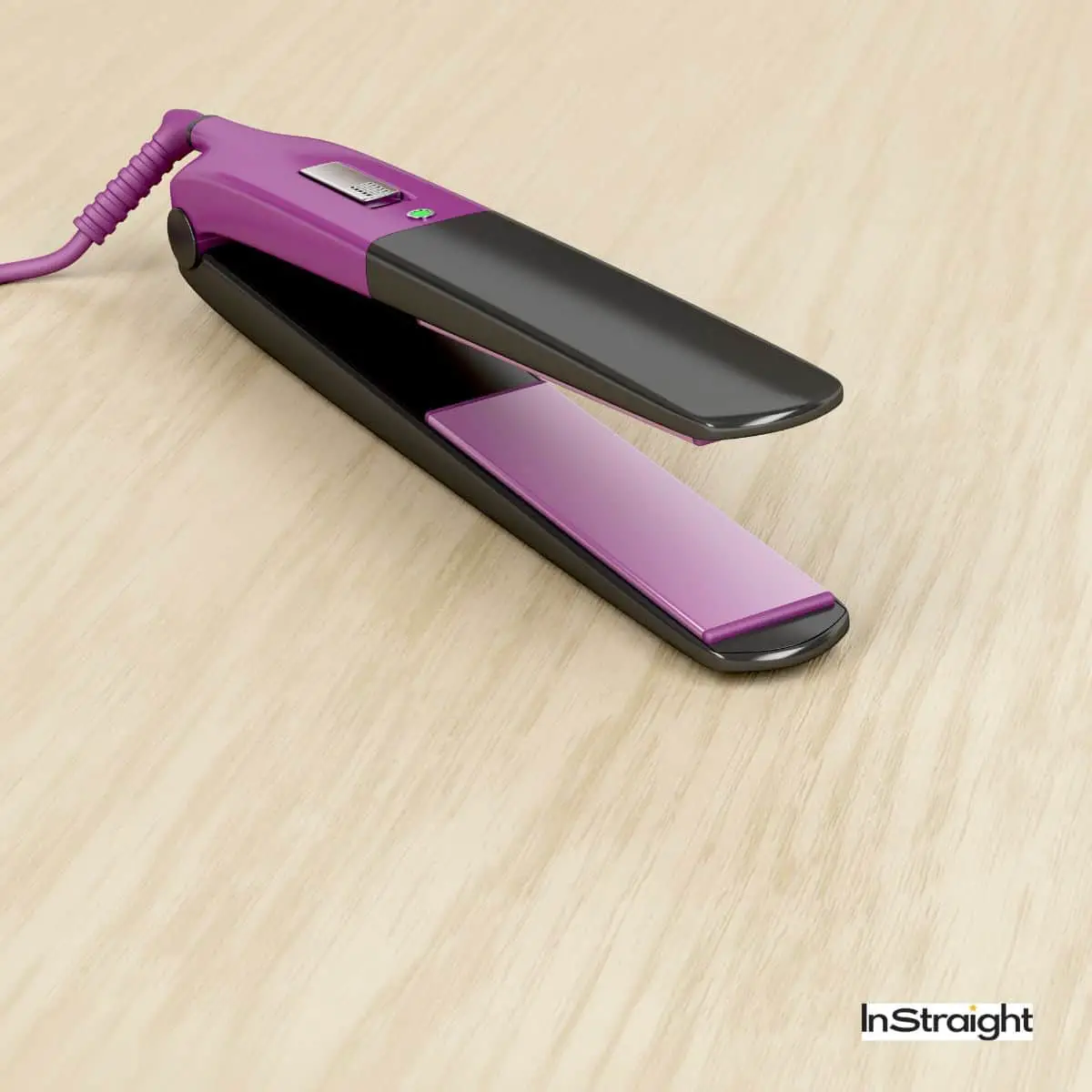The ever-long debate that is Infrared hair straightener vs ceramic straightener still rages. Everyone needs the best hair straighteners that don’t compromise on quality and work perfectly for their hair type.
Thankfully, we’ve come a long way from burning our scalps with the hot iron rods of 1872 and can afford to choose between the most effective tools. (1)
To that end, which type of straightener among these two provides quicker heating of hair fibers at a reasonable price? Let’s find out.
Let’s Investigate the Differences
There are a variety of products on the market to fit different needs. Choose a hair straightener that best fits your hair type and budget.
- Infrared rods use electromagnetic radiation for heat transfer.
- Infrared is the safer, cheaper, and quicker option.
- Health benefits like increased blood flow to the scalp are linked to using infrared hair tools.
- Ceramic plates conduct heat by physical contact with hair.
- Hair is often left straighter when using ceramic tools.
- Professionals use ceramic straighteners. As with many professional-grade hot tools, you can expect a higher price.
Both have different strengths and weaknesses; your choice ultimately depends on your hair type and budget.
If you’re looking for a great explanation, check out this video comparing the two tools.
What is an Infrared Hair Straightener?
Infrared straighteners work on the basic principle of electromagnetic waves. More accurately, infrared waves emitted by the hot surface are used to heat your hair from the inside out.
An infrared straightener precisely reproduces waves of a specific wavelength that cause even and quick heating. They can also remove bacteria and odors from your hair.
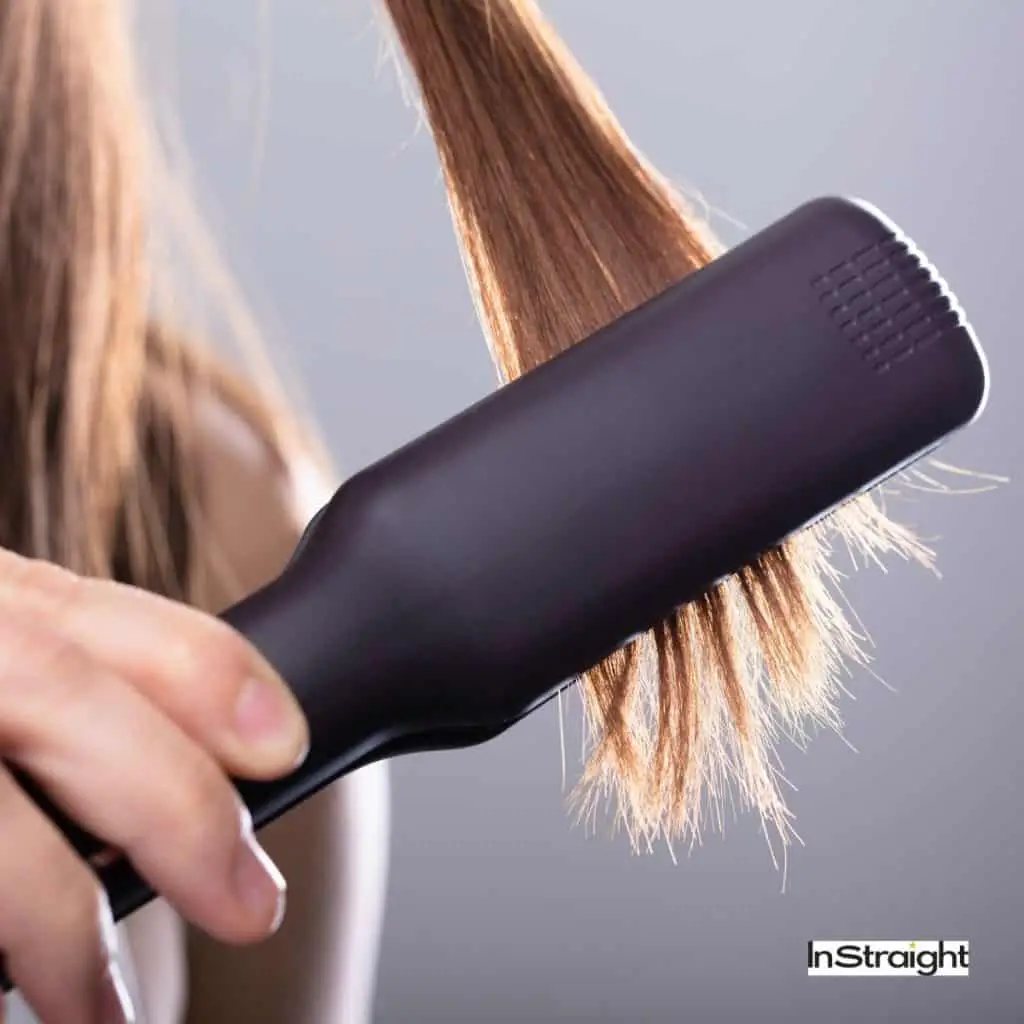
Infrared hair tools use a lower degree of heat than other types of hair products. Instead of high heat, they emit negative ions that seal moisture into your hair.
Lower heat and improved moisture content prevent frizzy hair and damage.
Advantages Of An Infrared Flat Iron
The main advantage of infrared heat is the reduced risk of hair damage. Whereas most ceramic irons transfer heat energy through contact with the hair, infrared uses invisible waves to achieve the same results.
As a result, infrared straighteners are best for women with weak or damaged hair. It also works well with thin hair, as you don’t need excessive heat to straighten it out.
Infrared straighteners work quickly, so you can get ready faster on a busy morning. In a maximum of 2 to 3 passes, these straighteners will leave your hair straight, smooth, and healthy looking.
Speed is essential for professional hair stylists who cannot spend too much time on a single customer.
On top of that, infrared waves have the innate ability to kill any bacteria and microbes. This will leave your hair feeling fresh and odorless. If you don’t have time to wash your hair, this feature can help you feel clean and look your best.
Infrared irons also promote scalp blood flow and boost hair growth, making them a great asset if you want to improve the health of your hair.
With these, you need not worry about hair sticking, as there is no conductive heating transfer. For best results, however, pick the right plate size, which should be between 1 to 1.5 inches wide.
The size you need depends on the length and thickness of your hair. In the Infrared hair straightener vs ceramic straightener battle, the infrared flat iron holds its own.
What is a Ceramic Hair Straightener?
The second type of straightener is the one that uses ceramic plates. These straighten the hair by applying heat directly to the hair, heating it from the outer layer to the inside.
Ceramic straighteners should always be used properly, in moderation, and with a heat protectant. Due to the direct contact with hair, there is a tendency for irreversible hair damage when used improperly or long-term. (1)
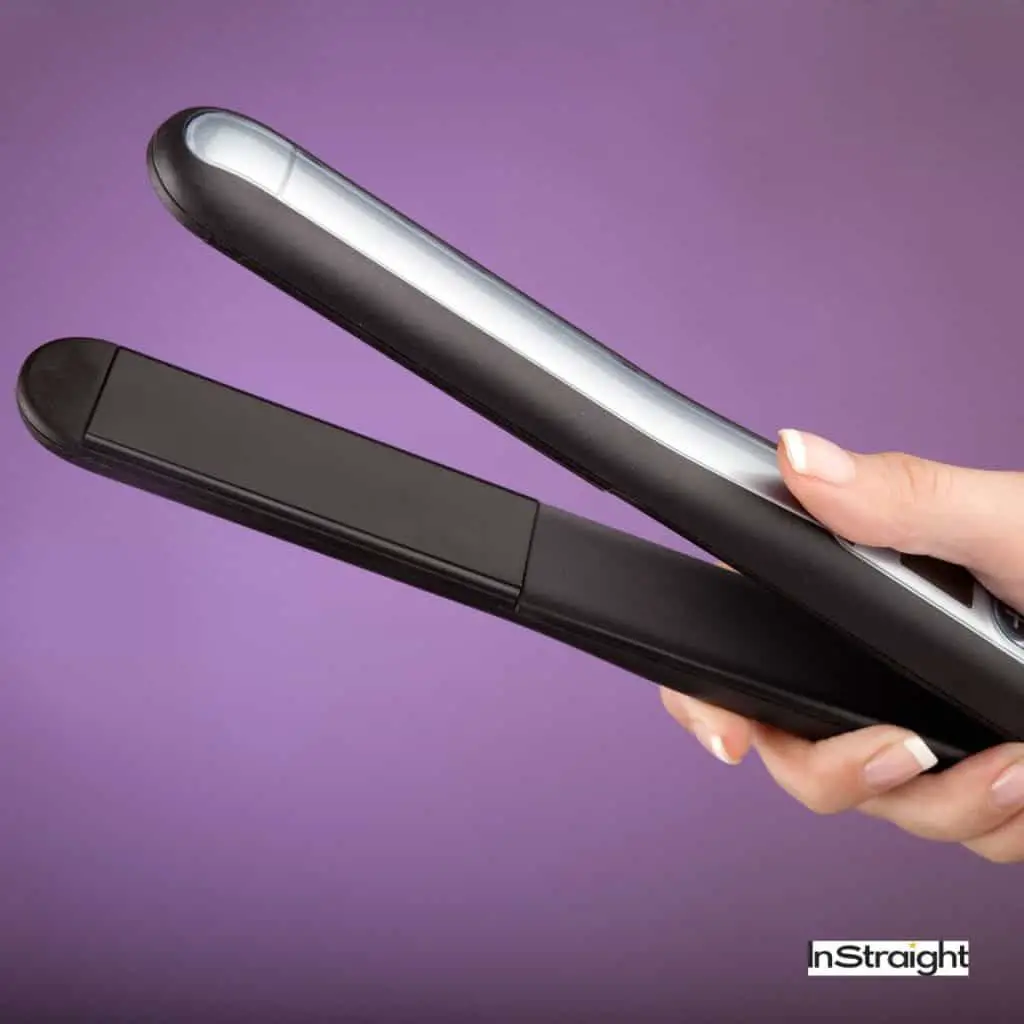
The best ceramic hair straighteners have temperature control settings. You can set the heat within a predetermined, ideal temperature range, depending on your hair type. Thick or curly hair will need more heat to become straight hair.
The best way to use these is right after shampooing and conditioning your hair. Dry your hair before using any hair straightening tool. Wet hair is very fragile. You can burn wet or damp hair easily.
The combination of wet hair and heat can cause burning of the hair, as it reaches high temperatures faster. When ironing, split the hair into sections and start from the root to the tips of your hair.
Advantages of Ceramic Flat Irons
Replacing the metal with ceramic plates drastically reduces the risks of heat damage and the classical “smoky hair” phenomenon. This is primarily due to the rapid and even heat spreading of ceramic irons.
Women with coarse hair should choose these over infrared to get faster results. Physical contact with the hair allows proper heat distribution from the hair cuticle to the cortex.
An adjustable temperature setting on these makes them suitable for a wider range of hair types. While infrared straighteners may not work well with coarse hair, ceramic straighteners can be used on both thick and thin hair, thanks to the adjustable temperature.
READ MORE: The Good And Bad Of Andis Ceramic Flat Iron
Infrared Hair Straightener Vs. Ceramic: Which One is Better?
This decision falls to personal preference and the type of hair you have. It is a good idea to save money and purchase a high-quality hair straightener. Otherwise, you may spend more money trying to fix damaged hair.
Infrared straighteners can make your hair smooth in a matter of seconds. It’s also the healthier and safer option of the two, with gentler heat. You won’t need to use a hair protectant with an infrared technology straightener.
On the other hand, a ceramic flat iron is the industry standard due to its compatibility with a wide variety of hair textures and thicknesses. It leaves hair straighter and smoother compared to infrared rods.
Think about your hair type and how often you would like to straighten your hair before choosing your styling tools. Choose an infrared straightener if you have thin hair and want a healthy, affordable option.
If it’s the salon-like quality you’re after for thick and coarse hair, then choose from a variety of ceramic straighteners. You may also want to consider some unique features below before selecting a hair straightener.
- power cord length that works well in your space
- LED display for easy control
- auto shutoff feature for safety
- digital controls for ease of use
- professional quality straighteners
- easy temperature selection
You can choose from many basic models of hair straighteners if you need an affordable option. Consider a salon-quality version if you plan to use your hair straightener often, however.
FAQs
What Type Of Hair Straighteners Are There?
There are multiple types of flat irons. The most common ones are the ones with metal plates. Choose between infrared, ceramic, and titanium for the best professional results.
What Kind Of Flat Iron Technologies Are Used?
Straighteners these days have innovative tech installed in them. The four major types of technologies include keratin infusion, ionic technology, non-ionic technology, and steam technology.
What Temperature Should A Flat Iron Be?
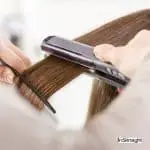
To straighten your hair, a flat iron must hit at least 220 degrees (104 Celsius). Choose a flat iron with temperature control. You may need to decrease the heat for thin hair and increase it for thick hair.
Conclusion
Straightening hair is a very delicate process. You have to choose between the health of your hair and the quality of the end result, which is no easy feat.
Hopefully, this review of Infrared hair straightener vs ceramic can help you make the best choice for your hair type.
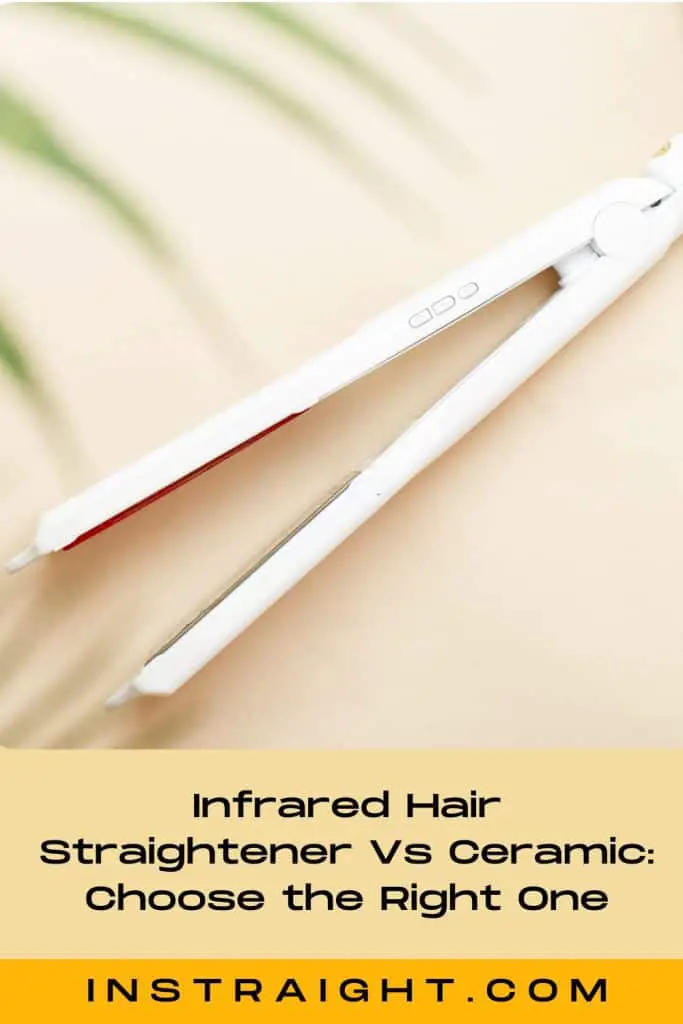
So, Infrared hair straightener vs ceramic, what is your choice? Let us know in the comments section!
References:
1. Mirmirani P. Ceramic flat irons: Improper use leading to acquired trichorrhexis nodosa. Journal of the American Academy of Dermatology. 2010;62:145–7.
2. Breuning E. Hair straighteners: A significant burn risk [Internet]. Research Gate. Available from: https://www.researchgate.net/publication/5810429_Hair_straighteners_A_significant_burn_risk
- About the Author
- Latest Posts
Martina is a graduated Doctor of Dental Medicine with a huge obsession for anything beauty-related. Her freelance writing started out as a creative outlet and turned out to be a full-time job. If you have any beauty questions, the chances are Martina has the answers. You can find more about her HERE. Follow her on LINKEDIN , INSTAGRAM
